|
___________
Essay
on the
THEORY
OF THE EARTH
BY
Baron
G. Cuvier
Perpetual
Secretary of the French Institute, Professor and
Administrator
of the Museum of Natural History
WITH
GEOLOGICAL ILLUSTRATIONS
by
PROFESSOR
JAMESON
Fifth
Edition
William Blackwood,
Edinburgh; and
T. Cadell, Strand, London.
1827
|

|
This electronic edition prepared by Dr.
David C. Bossard
from original documents in the personal library of Dr. Ted Davis.
550+24 pages
August, 2007.
Copyright © 2007 by David C. Bossard.
Autograph
Ichthyosaurus 255
Plesiosaurus 256
Crocodile 258
Megalosaurus 259
Pterodactylus 261
Iguanodon 263
Mosasaurus 264
Dolphin 264
Lamantin 265
Morse 265
Palaeotherium 266
Lophiodon 268
Anoplotherium 270
Antliracotheria 272
Cheropotamus 272
Adapis 273
Vespertilio 274
Ziphius 280
Mammoth 280
Mastodon 281
Hippopotamus 283
Rhinoceros 283
Elasmotherium 285
Horse 288
Fossil Elk 286
Megatherium 289
Megalonyx 290
Bear 291
Man 294
LIST
OF PLATES.
Click on image for plate at 100 ppi.
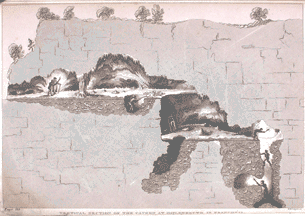
Frontispiece
Plate at 300 ppi.
Vertical section of the Bone-Caves of
Gaylenreuth, in Franconia.
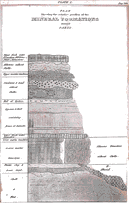
Plate I
Plate at 300 ppi.
Relative position of the Tertiary
Mineral Formations around Paris.
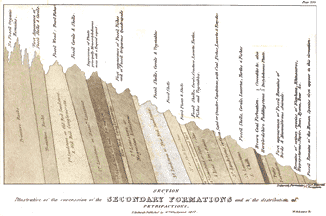
Plate II
Plate at 300 ppi.
Illustrative of the
Succession of the Secondary Formations, and of the Distribution of
Petrifactions.
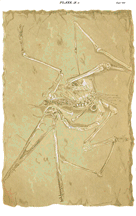
Plate IIa
Plate at 300 ppi.
Extraordinary Fossil Animal named
Pterodactylus
longirostrus, found near Aichstedt, in Germany
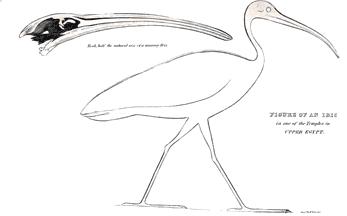
Plate III
Plate at 300 ppi.
Figure of an Ibis in a Temple in Upper Egypt.
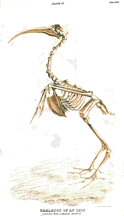
Plate IV
Plate at 300 ppi.
Skeleton of an Ibis from a Mummy found at Thebes.
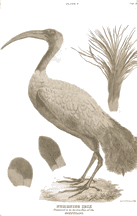
PlateV
Plate at 300 ppi.
Numenius Ibis, supposed true
Ibis of the Egyptians.
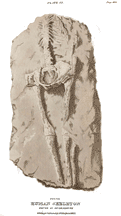
Plate VI
Plate at 300 ppi.
Fossil Human Skeleton found in Guadaloupe.
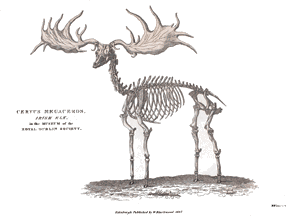
Plate VII
Plate at 300 ppi.
Cervus megaceros, Irish Elk in the Museum of the Royal Dublin
Society.
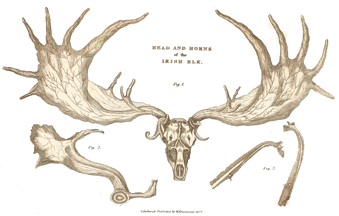
Plate VIII
Plate at 300 ppi.
Fig. 1. Head and Horn of the Fossil
Irish Elk. It represents
a larger, view of the head, in which the different markings are
delineated, and the expansion of the horns shown in a front view. In
this is also seen the peculiar forked appearance of the sur-antler.
Fig.
2. The portion of cast horn
mentioned at p. 501, having the smooth, convex surface at the root.
Fig. 3. An internal and external view of the perforated
rib,
described in p. 504.
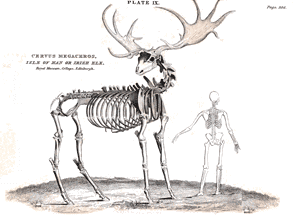
Plate IX
Plate at 300 ppi.
Cervus megaceros, Irish or Isle of Man Elk in the Royal Museum
of the University of Edinburgh.















